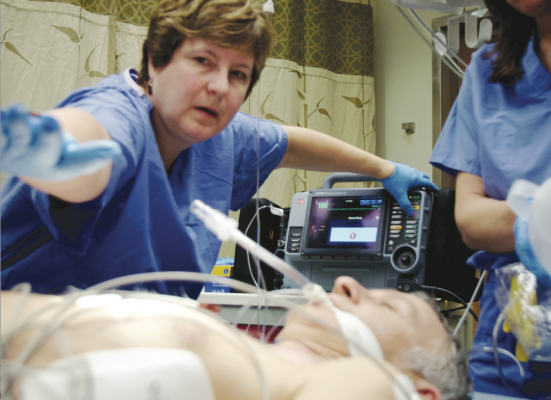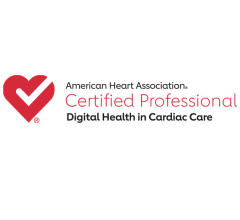
February 22, 2017 — Two new Ontario-wide heart attack protocols for paramedic services and emergency departments that aim to saves lives went into effect February 1.
For patients experiencing chest pain who call 911, the Ontario ST Elevation Myocardial Infarction (STEMI) Bypass Protocol enables paramedic services to bypass the local emergency department and transport patients having a STEMI heart attack directly to a hospital that can open the blocked coronary artery and provide a primary intervention. STEMI is a form of a heart attack that can cause death if not treated within minutes.
In Ontario, the frequency of STEMIs is approximately 68 of every 100,000 adult residents, a total of about 7,000 STEMIs per year. Timely reperfusion (the opening of a blocked coronary artery) requires early diagnosis via an electrocardiogram (ECG) and transportation to an advanced cardiac hospital via paramedics.
"Calling 911 means quicker treatment because paramedics are trained to recognize heart attack symptoms," said Madhu Natarajan, M.D., chair, Ontario STEMI Network, director, cardiac cath lab Hamilton; professor of medicine, cardiology at McMaster University, Interventional Cardiology, Hamilton Health Sciences. "[They] can begin treatment and call ahead to the emergency department and take you to the right place at the right time."
Any heart attack treatment begins with paramedics who have the medical expertise to complete an assessment and perform an ECG to determine if patients are having a STEMI heart attack. With the new protocol, paramedics can bypass the local hospital and transport directly to an advanced cardiac hospital where an interventional cardiologist can restore blood flow to the blocked coronary artery.
"When individuals experience symptoms of a heart attack (i.e. chest/arm pain, nausea, sweating and shortness of breath) it is very important that they call 911," said Peter F. Dundas, chief, Peel Regional Paramedic Services, Ontario Association of Paramedic Chiefs. "The Emergency Department STEMI Protocol ensures standardized, best-practice care for all STEMI patients in Ontario."
All emergency departments (ED) in Ontario now utilize a standard STEMI ED protocol when caring for patients experiencing a STEMI heart attack. Educational tools and resources have been distributed to every Emergency Department in Ontario to support implementation of the protocol.
The protocols also include standard care algorithms for patients that reside in remote regions.
The STEMI Protocols were developed in consultation with the Cardiac Care Network (CCN), the Ontario Association of Paramedic Chiefs, the Ontario Base Hospital Group Executive Committee, the Ontario Base Hospital Group Medical Advisory Committee, Toronto Paramedic Services and Ornge.
The CCN, under the direction of the Provincial Programs Branch (PPB), took the lead on the development of the Ontario STEMI Bypass Protocol through their Ontario STEMI Network, which included cardiologists, hospital administrators, base hospital medical directors and paramedics from across the province.
In Canada, there is a death every seven minutes due to heart disease or stroke. In 2008, myocardial infarctions (MI) made up 23 percent of deaths related to cardiovascular disease. Most deaths caused by myocardial infarctions occur out-of-hospital.
For more information: www.ccn.on.ca


 November 14, 2025
November 14, 2025 









